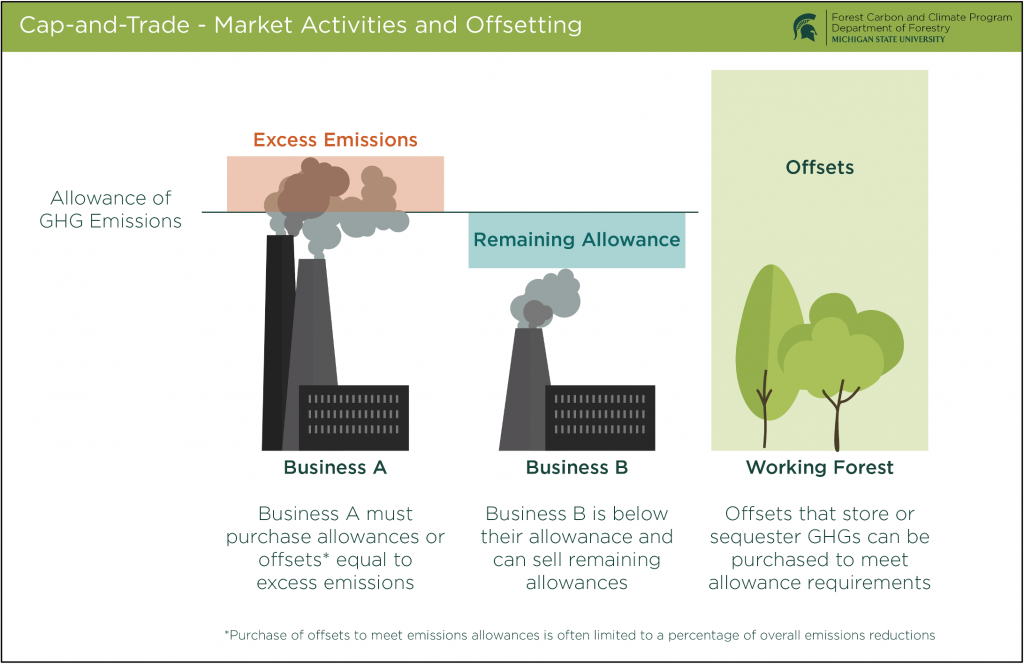The Emissions Trading System (ETS) is a market-based tool that can be used to reduce greenhouse gas (GHG) emissions. It operates on the principle of “cap and trade”. The government sets a limit (cap) on the total emissions of one or more economic sectors. For each ton of emissions, the companies in these sectors need to hold a permit, or an allowance. They can receive or purchase permits, and they can trade with other companies. This is the “trade” part of “cap and trade”.
Key Concepts
- Cap: The cap is a legally binding limit on the total amount of greenhouse gases that can be emitted by a sector, region, or country in a given period. This cap is often reduced over time, providing a decreasing number of allowances to drive emission reductions.
- Allowance: Under a cap and trade system, an allowance is a permit that grants the holder the right to emit a specific amount of greenhouse gases. One allowance typically permits the emission of one metric ton of carbon dioxide equivalent.
- Trade: The trade part of the system allows entities (like companies) that emit less than their allowances to sell their excess allowances to entities that are unable to stay below their own cap. This creates a financial incentive for entities to reduce their emissions.
- Auctioning: In some cap-and-trade systems, allowances are sold in auctions as a way of distributing them to emitters. This can generate public revenue that can be used to invest in renewable energy or energy efficiency, or to lower other taxes.
- Offsets: In some systems, companies can offset their emissions by investing in projects that reduce emissions outside of their own operations, like reforestation projects. These offsets generate credits that the company can use to comply with their cap.
- Price Stability Mechanisms: To avoid high volatility in the price of allowances, some cap and trade systems include mechanisms like price floors, price ceilings, or allowance reserve pools.
- Leakage: Leakage refers to the situation where emission reductions in one region lead to an increase in emissions in another region that does not have a similar emission control policy. This is a common concern in the design of cap-and-trade systems.
- Compliance: Compliance refers to the monitoring, reporting, and verification processes in place to ensure entities are meeting their obligations under the cap-and-trade system. Penalties are typically in place for non-compliance.

